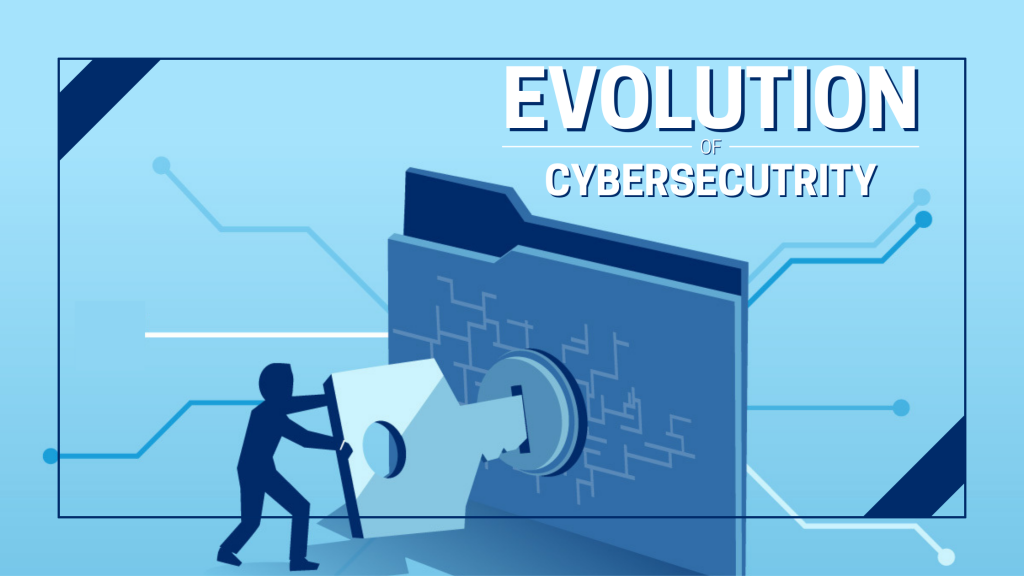The Evolution of Cyber Threats: From Past to Present

Estimated Reading Time: 3 minutes
Introduction
In the fast-paced digital age, the landscape of cyber threats has undergone a profound transformation, leaving no aspect of our interconnected world untouched. As technology advanced, so did the methods and motivations of cybercriminals, leading to an ever-evolving and increasingly sophisticated cyber threat landscape. In this article, we embark on a journey through time, tracing the evolution of cyber threats from their humble beginnings to the complex challenges faced in the present day. Understanding this historical perspective will shed light on the tactics, techniques, and trends that shape the cyber threats of today and underscore the importance of robust cybersecurity measures to safeguard our digital future.
The Early Days: Hacking for Exploration and Bragging Rights
In the early days of computing, during the 1960s and 1970s, hacking emerged as an act of curiosity and exploration. Early hackers sought to understand and explore computer systems, often with no malicious intent. They considered hacking a means of pushing the boundaries of technology and challenging themselves to overcome security barriers. However, as computer networks expanded, the motives behind hacking began to shift, leading to more targeted and potentially harmful cyber activities.
The Rise of Malware: Infecting the Digital Realm
The 1980s witnessed the birth of malware – malicious software designed to infiltrate and compromise computer systems. The first widespread malware, known as the Morris Worm, was unintentionally unleashed in 1988 by Robert Tappan Morris. This worm spread rapidly across the internet, infecting thousands of computers and highlighting the potential for widespread damage caused by malware.
In the subsequent years, cybercriminals took malware development to new heights. The 1990s saw the rise of viruses, worms, and Trojans, each with distinct attack vectors and methods of propagation. The infamous “ILOVEYOU” worm in 2000, for instance, caused havoc by spreading through email, crippling systems worldwide and resulting in significant financial losses.
The 1990s: Cybercrime and Profit Motives
As the internet’s popularity soared in the 1990s, cybercrime emerged as a lucrative pursuit for cybercriminals. Hackers began to focus on financial gain, targeting individuals, businesses, and financial institutions for monetary extortion. Cyberattacks, including phishing, ransomware, and credit card fraud, became prevalent, emphasizing the need for improved cybersecurity practices to protect digital assets.
One of the defining moments of this era was the emergence of Distributed Denial of Service (DDoS) attacks. In 2000, the “MafiaBoy” DDoS attack targeted prominent websites such as Yahoo, Amazon, and eBay, bringing them to a standstill. This event showcased the potential of DDoS attacks as tools for disruption and extortion.
The New Millennium: Nation-State Cyber Warfare
With the turn of the millennium, cyber threats took on a more sinister and politically motivated dimension. State-sponsored cyber warfare became a reality, with nation-states engaging in cyber espionage, sabotage, and information warfare. Prominent examples include the Stuxnet worm, believed to be jointly developed by the United States and Israel, which targeted Iran’s nuclear facilities in 2010, marking a significant shift in the cyber threat landscape.
Nation-states have increasingly integrated cyber capabilities into their military doctrines, recognizing the potential of cyber attacks to disrupt critical infrastructure, steal sensitive data, and influence geopolitical affairs. The development of sophisticated cyber weapons, such as APT29’s Cozy Bear and APT28’s Fancy Bear, has underscored the growing importance of cybersecurity as a national security imperative.
The Present: Advanced Persistent Threats and Cyber Espionage
In the present era, cyber threats have reached unparalleled levels of sophistication. Advanced Persistent Threats (APTs) are stealthy and prolonged attacks, often carried out by well-funded and organized threat actors, including nation-states and cybercriminal syndicates. Their primary objectives include espionage, data theft, and intellectual property theft, posing significant challenges to governments, businesses, and critical infrastructure worldwide.
APTs often rely on “living off the land” techniques, using legitimate tools and operating system features to remain undetected for extended periods. They employ social engineering tactics, such as spear-phishing and watering hole attacks, to gain initial access to targeted networks. Once inside, APTs establish persistent footholds, maneuvering stealthily to avoid detection and exfiltrate sensitive data.
The dark web, a hidden part of the internet accessible only through specialized tools, has become a hub for cybercriminal activities. Illicit marketplaces on the dark web offer a range of cybercrime services, including the sale of hacking tools, stolen data, and ransomware-as-a-service (RaaS) schemes. The anonymity provided by the dark web makes it an attractive haven for cybercriminals to operate with reduced risk of detection.
The Future: AI-Driven Threats and Emerging Technologies
As emerging technologies like artificial intelligence (AI) and the Internet of Things (IoT) continue to reshape our world, cyber threats are likely to become even more sophisticated. AI-driven attacks, capable of automating and adapting to cybersecurity defenses, pose an imminent challenge. Securing the IoT, with billions of interconnected devices, will also require innovative cybersecurity strategies to prevent large-scale breaches.
Looking ahead, quantum computing presents both opportunities and challenges for cybersecurity. Quantum computers have the potential to break current encryption standards, rendering traditional cryptographic algorithms obsolete. Preparing for the quantum threat involves developing quantum-resistant encryption techniques and evolving security measures accordingly.
Conclusion
Penetration testing is a proactive and invaluable tool in an organization’s cybersecurity arsenal. By simulating real-world attacks, pentesting empowers organizations to identify and rectify security weaknesses before they can be exploited by malicious actors. Through meticulous planning, skilled execution, and actionable reporting, pentesting plays a crucial role in safeguarding valuable assets, maintaining customer trust, and fortifying defenses against the ever-evolving landscape of cyber threats. Embracing pentesting as an integral part of a robust cybersecurity strategy empowers organizations to stay one step ahead in the battle against cybercrime.

Discover our comprehensive range of cybersecurity services designed to protect your organization’s digital assets. From threat intelligence and security assessments to cloud pentesting, we provide tailored solutions to ensure your systems and data are secure.
Think
Copyright ©2022 Cyber Cache All Rights Reserved
